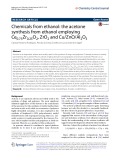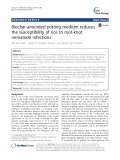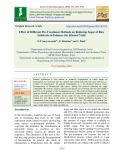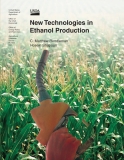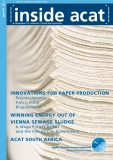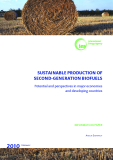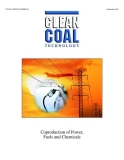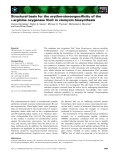
Co-production
-
The monomers p-biphenyloxycarbonylphenyl acrylate (BPCPA) and p-biphenyloxycarbonylphenyl methacrylate (BPCPMA) were synthesized by the reaction of p-acryloyloxybenzoyl chloride and p-methacryloyloxybenzoyl chloride with 4-hydroxybiphenyl, respectively, and polymerized by bulk polymerization in vacuum by using dicumyl peroxide. The graft copolymerization of the monomers onto polypropylene were carried out by bulk melt polymerization at 170◦C with various concentration levels of the monomers and the initiator in reaction mixtures.
 17p
17p  langthannam
langthannam
 29-12-2021
29-12-2021
 4
4
 0
0
 Download
Download
-
Acetone is an important solvent and widely used in the synthesis of drugs and polymers. Currently, acetone is mainly generated by the Cumene Process, which employs benzene and propylene as fossil raw materials. Phenol is a coproduct of this synthesis.
 11p
11p  vijiraiya2711
vijiraiya2711
 27-05-2020
27-05-2020
 7
7
 0
0
 Download
Download
-
Biochar is a solid coproduct of biomass pyrolysis, and soil amended with biochar has been shown to enhance the productivity of various crops and induce systemic plant resistance to fungal pathogens.
 15p
15p  vihashirama2711
vihashirama2711
 21-05-2020
21-05-2020
 18
18
 0
0
 Download
Download
-
Ethanol production is also known as ethanolic fermentation in which sugars of biomaterials are converted into the ethanol and carbon hydroxide that may called as coproduct of fermentation. In general fermentation is a bio-chemical process where decomposition of biomaterials takes place. During bio-chemical reduction the sugar compounds like sucrose, fructose, glucose and lactose are converted into the ethyl ethanol and CO2 as by product of the fermentation process.
 19p
19p  quenchua4
quenchua4
 06-04-2020
06-04-2020
 15
15
 3
3
 Download
Download
-
part 2 book “economic foundations for creative ageing policy” has contents: aims and challenges of the creative ageing policy, principles, governance, and coproduction of the creative ageing policy, organizational forms and management for the building of creative capital of older people.
 206p
206p  tieu_vu13
tieu_vu13
 06-08-2018
06-08-2018
 24
24
 1
1
 Download
Download
-
present: changes since the 1993 ers analysis of ethanol production; ethanol’s energy efficiency; advances in separation technologies; new ways of fermentation; new enzymes; distillation technology; control systems; environmental technologies; technologies involving coproducts; stillage clarification and other uses of membranes; regional impacts of ethanol plants; national benefits from ethanol…
 33p
33p  loixinloi
loixinloi
 08-05-2013
08-05-2013
 57
57
 8
8
 Download
Download
-
Modifications of the dry-grind facility have made the recovery of corn germ possible in dry milling. Normally, neither corn germ nor any other corn fraction is separated out before becoming part of the mash; all components go through fermentation and become part of the feed coproduct, DDGS. Various modifications of the process have made it possible to recover fiber and corn germ—and thus corn oil—from both the endosperm and the peri- carp (outer covering) of the kernel.
 62p
62p  loixinloi
loixinloi
 08-05-2013
08-05-2013
 67
67
 4
4
 Download
Download
-
Higher ethanol yield leaves less DDGS for animal feed, possibly changing the quality as well as the quantity of the feed coproduct. A lower quantity might raise the protein percentage, but it could also concentrate some of the undesirable contents of the DDGS. Any changes, however, are expected to be minor. (See Haefele et al., p.14, on the selection of hybrids.
 32p
32p  loixinloi
loixinloi
 08-05-2013
08-05-2013
 57
57
 5
5
 Download
Download
-
Unlike in dry milling, where the entire mash is fermented, in wet milling only the starch is fermented. The starch is then cooked, or liquefied, and an enzyme added to hydrolyze, or segment, the long starch chains. In dry milling, the mash, which still contains all the feed coproducts, is cooked and an enzyme added. In both systems a second enzyme is added to turn the starch into a simple sugar, glucose, in a process called saccharification. Saccharification in a wet mill may take up to 48 hours, though it usually requires less time, depending on the amount of enzyme used.
 222p
222p  loixinloi
loixinloi
 08-05-2013
08-05-2013
 56
56
 9
9
 Download
Download
-
The industry is still improving technologically. It is far more mature than in 1993, and new developments appear poised to bring costs down further and to reduce the environmental impact of producing ethanol. In this report, we examine various production technologies, beginning with input improve- ments and then discussing process improvements, environmental technolo- gies, and technologies involving coproducts. Finally, we look at niche markets and briefly examine cellulosic conversion.
 118p
118p  loixinloi
loixinloi
 08-05-2013
08-05-2013
 53
53
 7
7
 Download
Download
-
Gaseous injection of sulfur dioxide was beginning in 1993 and is a part of the quick-germ (QG) and quick-fiber (QF) techniques currently being devel- oped. There is revived interest in the use of special corn hybrids high in starch, though their use is still not widespread. Membrane filtration and yeast immobilization were being used in some plants in 1993, but their use, contrary to expectations, has not increased. Bacterial fermentation is still not used commercially, nor is cellulosic conversion of corn fiber.
 22p
22p  loixinloi
loixinloi
 08-05-2013
08-05-2013
 72
72
 5
5
 Download
Download
-
Though the savings from technological improvements are significant, they tend to be small compared with fluctuations in the net cost of corn, the main ethanol feedstock. This is illustrated in table 2, which presents data on corn costs and profits from the coproduct DDGS (distiller’s dried grains with solubles) in dry-mill ethanol production from 1981-2004. Since 1981, sales of DDGS have recovered nearly half the cost of each bushel of corn used to produce ethanol, peaking in 1986, when over 66 percent of the feedstock cost was recovered this way.
 41p
41p  loixinloi
loixinloi
 08-05-2013
08-05-2013
 46
46
 3
3
 Download
Download
-
Tham khảo sách 'clean coal technology coproduction of power fuels and chemicals', kỹ thuật - công nghệ, kĩ thuật viễn thông phục vụ nhu cầu học tập, nghiên cứu và làm việc hiệu quả
 34p
34p  nt18101
nt18101
 30-04-2013
30-04-2013
 28
28
 5
5
 Download
Download
-
The nonheme iron oxygenase VioC fromStreptomyces vinaceuscatalyzes Fe(II)-dependent and a-ketoglutarate-dependent Cb-hydroxylation of l-arginine during the biosynthesis of the tuberactinomycin antibiotic vio-mycin. Crystal structures of VioC were determined in complexes with the cofactor Fe(II), the substrate l-arginine, the product (2S,3S)-hydroxyargi-nine and the coproduct succinate at 1.1–1.3 A˚ resolution.
 14p
14p  vinaphone15
vinaphone15
 25-02-2013
25-02-2013
 53
53
 3
3
 Download
Download
CHỦ ĐỀ BẠN MUỐN TÌM









